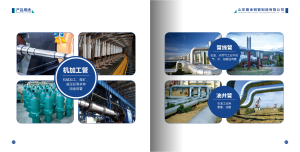Grade 304 contains 18Cr-8Ni. 304 is a kind of universal stainless steel, which is widely used in the production of equipment and parts requiring good comprehensive performance (corrosion resistance and molding).
In the air or chemical corrosion medium can resist corrosion of a high alloy steel, stainless steel is a beautiful surface and corrosion resistance, do not have to go through plating and other surface treatment, and play the inherent surface properties of stainless steel, used in a variety of steel, commonly known as stainless steel. Representative performance of 13 chromium steel, 18-8 chromium nickel steel and other high alloy steel.
The mechanism of stainless steel rust prevention is the formation of a dense oxide film of alloying elements to isolate oxygen contact and prevent continued oxidation. So stainless steel is not “rust”. 304 material rust phenomenon, there may be the following reasons: 1. There are chloride ions in the use environment. Chloride ions are found in salt, sweat, sea water, wind, soil, and so on. Stainless steel corrodes quickly in the presence of chloride ions, even more than ordinary mild steel. So there are requirements for the use of stainless steel environment, and need to often wipe, remove dust, keep clean and dry. (This would give him a “misuse.”) The United States has an example: an enterprise with an oak container containing a chloride ion solution, the container has been used for more than 100 years, the 1990s plan to replace, because the oak material is not modern enough, the stainless steel replacement 16 days after the container due to corrosion leakage. 2. No solution treatment. The alloying elements did not dissolve into the matrix, resulting in low alloy content and poor corrosion resistance. 3. This material, which does not contain titanium or niobium, has an inherent tendency to intergranular corrosion. Intergranular corrosion can be reduced by adding titanium and niobium together with stable treatment. From the metallographic point of view, because the stainless steel contains chromium, the surface of the formation of a very thin chromium film, this film is separated from the steel and the oxygen invasion of corrosion resistance. In order to maintain the corrosion resistance inherent in stainless steel, the steel must contain at least 12% chromium.
It is wisely used in household utensils (sinks, interior pipes, hot-water system bathtubs, and others),automotive components(wipers,mufflers,moldings),Medical instruments,Building materials, Some industries(chemicals,food processing,textiles),Vessel parts etc. If you are engaged in the related industry, our products will maximize the benefits for your business.




